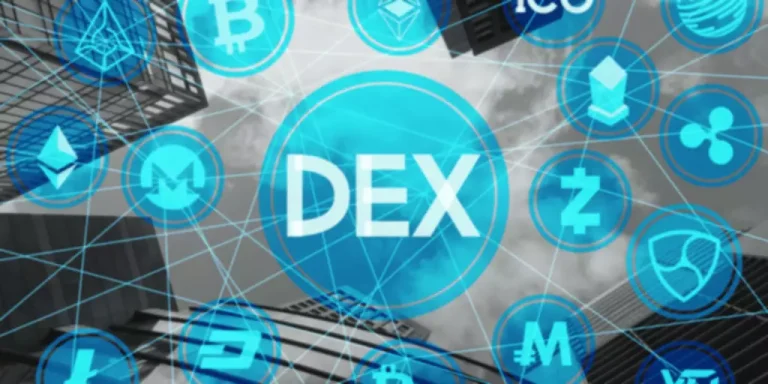




The investment information provided in this table is for informational and general educational purposes only and should not be construed as investment or financial advice. Bankrate does not offer advisory or brokerage services, nor open Finance vs decentralized finance does it provide individualized recommendations or personalized investment advice. Investment decisions should be based on an evaluation of your own personal financial situation, needs, risk tolerance and investment objectives.
Blockchain infrastructure remains in its early form, much of which is clunky to use for developers and market participants alike. Having DeFi sector solutions run on different blockchains has several potential benefits. Blockchains may be forced to improve speed and lower fees, based on the performance of competing blockchains, creating a competitive environment that potentially results in improved functionality. The existence of different layer-1 blockchains also leaves more room for development and traffic, instead of everyone trying to pile onto a single layer-1 option. Though you may or may not interact in a straightforward P2P manner when using DeFi solutions, the spirit of the process is P2P, in that third parties are replaced with technology that is not ruled by a central authority. The decentralization aspect of DeFi is not only a dispersal of power but also a dispersal of risk.
In addition, technology glitches, high energy consumption, hardware malfunctions, and even system maintenance and upgrades all contribute to DeFi’s risk factors. From taking out the middleman to turning basketball clips into digital assets with monetary value, DeFi’s future looks bright. The key to any foray into a new financial space is to start slow, stay humble and don’t get ahead of yourself. Keep in mind that digital assets traded in the cryptocurrency and DeFi worlds are fast-moving and there’s significant potential for loss.

Regulators in the United States have begun clamping down on firms that issue these products, saying they could represent a risk to consumers. Karl Montevirgen is a professional freelance writer who specializes in the fields of finance, cryptomarkets, content strategy, and the arts. Karl works with several organizations in the equities, futures, physical metals, and blockchain industries. He holds FINRA Series 3 and Series 34 licenses in addition to a dual MFA in critical studies/writing and music composition from the California Institute of the Arts.
In effect, they provide an income for those who supply liquidity — similar to interest paid on deposits at traditional banks, but riskier (as discussed below). Since decentralized finance provides a whole new approach to finances, emphasizing individual empowerment and cross-border financial transactions, it also raises questions about oversight and culpability. When a DeFi transaction prompts a need for punitive measures to be taken, there are no clear-cut rules about which federal or local jurisdictions those actions may fall under. Decentralized finance, also known as DeFi, is a collective term for companies and technologies that conduct financial exchanges and transactions using the same technology that underpins cryptocurrency networks. As you can imagine, these services look a bit different without a central authority like a bank overseeing the whole process.
Following in Ethereum’s footsteps, there are now many blockchains with similar programmability and their own flourishing DeFi ecosystems. Lending may have started it all, but DeFi applications now have many use cases, giving participants access to saving, investing, trading, market-making and more. Decentralized finance’s ultimate goal is to challenge and eventually replace traditional financial services providers. DeFi often harnesses open-source code, allowing anyone the opportunity to build on pre-existing applications in a permissionless, composable manner. Decentralized finance—or DeFi for short—is an emerging digital ecosystem that allows people to send, purchase, and exchange financial assets without relying on banks, brokerages, or exchanges.
And there are questions among investors and regulators about whether some of the leading stablecoin issuers actually have enough assets to pay out their holders, in the event of a large-scale redemption. Her areas https://www.xcritical.in/ of expertise include futures and options trading strategies, stock analysis, and personal finance. Today, you might put your savings in an online savings account and earn a 0.50% interest rate on your money.

Then institutions need to decide what their ambition is, where they want to play, and how much they’re willing to invest, taking into account their clients’ needs and capabilities. Interest rates and transaction fees change frequently and could potentially get expensive. Picture this—you use a payment service to send money somewhere, like to a friend, or use a credit card to buy a coffee. Smart contracts are seen as a more secure, transparent, and efficient way for parties to transact with one another when compared to more traditional systems.
They put the “peer” in peer-to-peer networks in that they allow users to transact with one another in a trustless way — that is, without the need for an intermediary. The smart contract platform Ethereum is the top blockchain facilitating decentralized marketplaces, but many others exist that allow users to trade or exchange specific assets, such as nonfungible tokens (NFTs). In the U.S., the Federal Reserve and Securities and Exchange Commission (SEC) define the rules for centralized financial institutions like banks and brokerages, which consumers rely on to access capital and financial services directly. DeFi challenges this centralized financial system by empowering individuals with peer-to-peer digital exchanges.
Investors can also stake cryptocurrency to invest in a DeFi operation’s blockchain ecosystem. Staking allows crypto holders to support a coin’s blockchain network by locking up coins to validate new blocks for a transaction. If your stake is chosen in the validation process, you can earn income in the form of more cryptocurrency. A more advanced version of this type of investing is called yield farming, which involves lending cryptocurrency to a DeFi platform or operation in exchange for interest or additional cryptocurrency. Because it utilizes the blockchain, individuals and businesses can transact other asset types that aren’t accessible through traditional financial means, such as smart contracts and non-fungible tokens. Decentralized finance, also known as DeFi, uses cryptocurrency and blockchain technology to manage financial transactions.
Decentralized finance provides a radical new alternative to the traditional model of financial institutions. The aim of decentralized finance is to do away with the intermediary powers who typically control and direct financial institutions. Instead, DeFi allows individuals and organizations to utilize new technologies and transact directly. When yield farming, users lend out their crypto to other users and earn interest that is paid in crypto — usually “governance tokens” that give liquidity providers a say in the operation of the protocol. It is a way for investors to put their crypto to work to enhance returns and is a key innovation in the DeFi market. Yield farming has been dubbed the “Wild West” of DeFi, with market participants hunting down the best strategies that they then often keep close to the vest so as not to tip their hand to other traders and lose the magic.
Morgan, and Japan’s SBI Digital Assets Holding, showed the potential for Institutional DeFi to transform global markets. DeFi is a collective term for anonymous financial services available 24/7 without a middleman. Depending on your wallet, most assets can be moved anywhere, anytime, and transactions can be completed within minutes. Centralization means a central authority, like a bank, has complete control of all decisions and actions.
In DeFi, however, taking out a loan can be as simple as visiting a DeFi DApp, depositing some crypto as collateral, and borrowing against it instantly. And instead of the borrowed assets coming from a bank, they’d come from other users who are participating in the ecosystem by lending their assets…and earning interest payments for doing so. In terms of adoption, it is uncertain how exactly things will pan out in the future. One potential outcome might include traditional finance adopting aspects of DeFi while retaining elements of centralization rather than DeFi completely replacing mainstream financial options.

While Bitcoin is the more popular cryptocurrency, Ethereum is much more adaptable to a wider variety of uses, meaning much of the dapp and protocol landscape uses Ethereum-based code. It is unregulated and its ecosystem is riddled with infrastructural mishaps, hacks, and scams. Each entity in the chain receives payment for its services, generally because merchants must pay for the use of credit and debit cards. That is a daunting task, which is why firms need to start developing their own playbooks now. They should begin by forming a house view on the likely impact of DeFi, which could range from a modest evolution of existing market structures to a complete revolution that leaves DeFi structures triumphant.
Blockchain and cryptocurrency are the core technologies that enable decentralized finance. The two approaches differ with dramatic results in organization and management. A blockchain is a form of immutable distributed ledger that cryptographically secures entries, which are used for transactions. Blockchains are also the basis of cryptocurrencies, which are tokens that are created in a blockchain that have value. Transactions do not include an individual’s name but are traceable by the entities that have access, including governments, and law to protect an individual’s financial interests.
From the telegraph to the mainframe, technological change has long shaped the finance industry. People or companies in centralized finance handle the asset class and processes. However, assets are handled by a collection of smart protocols in decentralized finance. It all boils down to having faith in the people or organization behind the platform.